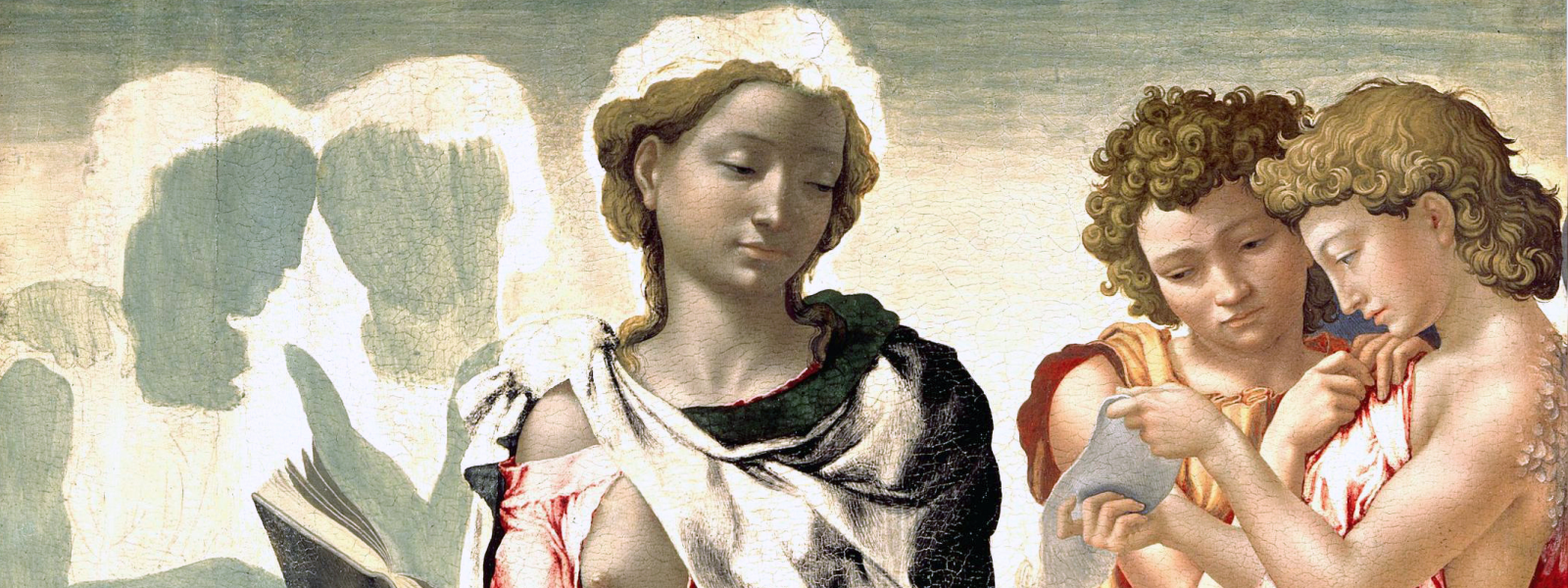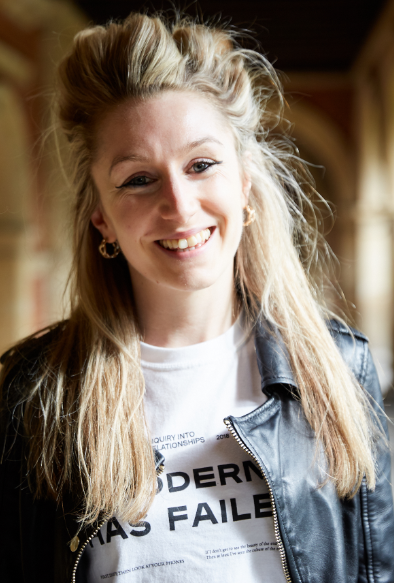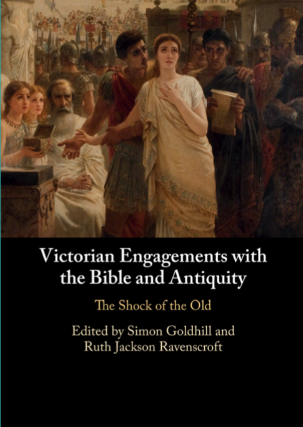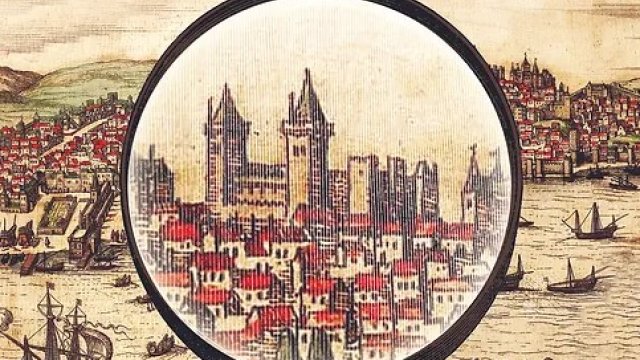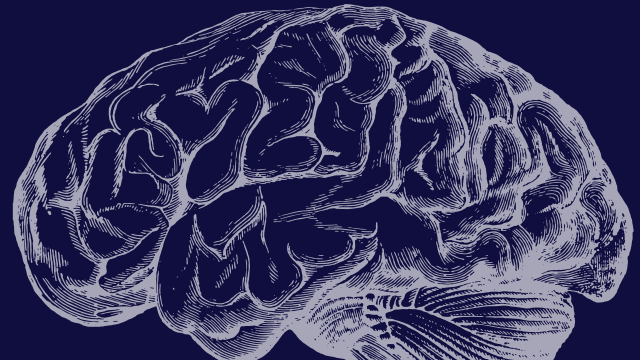A new collection of essays, Victorian Engagements with the Bible and Antiquity - The Shock of the Old, looks at how the 19th century brought a new sense of self, shaped by cultural innovation and technological change, as well as a new desire to look back, which brought a new consideration of stories, images and ideas inherited from antiquity and the Bible.
In a period when the writing and studying of history was first established as a vocation, the Victorians were, according to the collection’s co-Editor, Sidney Fellow Dr Ruth Jackson-Ravenscroft, ‘obsessed by their own moment in history, but also thinking about their roots.’
Dr Ruth Jackson-Ravenscroft
The collection challenges the notion that this was a century of secularisation; ‘‘The Bible and religion is still a really important cultural force in this period. God is still in the picture.’
We spoke to Ruth to find out more.
Can you describe the content of this collection?
‘Yes: across the volume we profile what we call the intellectual superstars, so some big Victorian movers and shakers in terms of the Classicists, historians, biblical scholars and scholars of literature writing in this period. We ask how their writing reflects a persisting interest in the Bible and Antiquity within Victorian culture. Among these figures one finds M.R. James, Gladstone, George Grote, Matthew Arnold. But this is a volume that is also heavily interested in material culture, so Victorian sculpture and art soon get a look in– Kate Nichols examines the 1887 Manchester Jubilee exhibition, and Carrie Vout looks at the Biblical and the Classical in Victorian sculpture.
‘One of the major themes we wanted to highlight is that this is the era when travel becomes a lot more convenient and affordable—when we see the birth of Thomas Cook, the travel agent, for example —although it's still not something people do to the extent that we do now. And travel and tourism in this period is not disconnected from Britain’s status as an imperial and colonial power, either. The book features an account of Victorian princes going on a tour of the empire; we see Protestant travellers from the United States going to Rome and encountering Roman Catholicism; and there’s also an interest in documenting Victorian spectacle: Rob Priest writes us an essay on the phenomenon of Oberammergau, the fact that in a Bavarian village you have the locals putting on a passion play, which tourists are welcome to come and see. In the 19th century, historical research and travel and tourism mean it becomes possible to navigate space and time much more easily, and that too interacts with how people understood the Bible and Classics’.
You look at global trends, with a particular focus on Germany and Britain. In what ways did these trends manifest differently at the national level?
‘Well, broadly speaking, German intellectuals had a sense of themselves as belonging to a land of scholars and poets and storytellers. People like the Brothers Grimm, for example, were writing fairytales - and clinging onto folk tales – but they were also philologists, thinking about the history of language and where it comes from. So, in German-speaking lands there was real emphasis on the cultural output. The Bible and Classics remain prominent preoccupations at this level.
‘In Britain, it wasn’t just culture where we see these trends emerge (as we find in the artistic achievements of the Manchester exhibition, and of Victorian sculpture), it was technology and power and empire that also mediated them. In his chapter on the travels of Victorian princes, for example, Michael Ledger-Lomas argues that royal tours in this period instigated a ’new technology of rule’. Through them, Victoria and the wider royal family sought to portray the crown as cosmopolitan and tolerant in its religiosity. Meanwhile, many European scholars became interested in mapping the world’s religious traditions and tracing them to their roots, all the while retaining the Bible and Christianity as a major model for what a ‘religion’ is and what it looks like.
As travel became easier, trade became greater and the empire became bigger, obviously people were coming into contact with a more diverse range of religions and thought. Was a need to understand ‘where we fit in’ a part of it, at least as it relates back to the Bible and religious belief?
‘Completely. And this looking back, and the search for roots and the search for identity, raise uncomfortable questions. I wouldn't call it a massive existential crisis, but one of the things that we are showing is that this was a period of doubt. And you're right, the encounter with other religions is important, as are the geological discoveries, and the way people reckoned with the idea of ‘deep time’, and how all of these things impacted Victorian perceptions of the past and how past informs present. This is a period in which there's no settled ground upon which a person can walk.
‘So, there is an interest in the Bible, and it's not purely a dry academic interest: “Did these people exist when we thought they existed? What language were they speaking? How do we read these texts?” It's not that in the 19th century we suddenly, out of nowhere, had a crisis about how to read the Bible and what kind of a document it is, but there is a turn to what we might call ‘historicism’, this idea of treating the biblical text as a historical artefact; an artefact that came into being at a particular place in time and had authors.
‘And that leads to all sorts of other questions. The 19th century was once thought of as this period when slowly religion became less and less important and we saw the emergence of what we might call ‘secular society’. But part of what the book is seeking to demonstrate is that actually Victorian people were continually fascinated and preoccupied by questions around religion. So, it's not that these questions don't exist anymore. There are certainly people problematizing the role religion has in public spaces, including the university, but there's also a continual interest in the past and in the Bible and what it means for people in the 'now’, and a continual influence of Christian ideas on British institutions and practices.’
And what does that mean for how religion evolved, if that's the right word, in the 19th century?
‘A major and quite basic point the book gets across is that religion remains prominent in all levels and aspects of society. Education and public literacy is one way in which religion and the Bible still has a kind of presence—you have great Christian socialists like F.D Maurice founding the working men’s College, you have Matthew Arnold on a public mission to change the way people read the Bible. You've also got Biblically-inspired art and literature – big novels like Ben Hur - touching the public consciousness. At the Manchester Exhibition, you have paintings which showcase themes from antiquity, and from the Bible. So, in terms of the public consciousness, the Bible is still there.
‘In terms of religion's evolution in the 19th-century, perhaps what we can say is that religiosity and faith are affected—even transformed—by this obsession with history, with what happened in the past and why that matters today, and with the very historical imagination that the Victorians have. Events for the Victorians appear on this linear timeline. This is a far cry from the religiosity you find in medieval life, where the relationship between God, human beings and time was understood differently; back then the vertical relation between humans and God informed the relation between all things in time.’
But intertwined with ideas about Greek society.
‘Absolutely. And with this interest in looking back to the past, the models for cultural innovation and cultural prestige are coming from the Greeks and from Classics as well as from the Bible.
And new technology plays a role in this?
‘Yes. In my epilogue to the book, I mentioned this strange sort of invention that was briefly popular in the Victorian period, the stereoscope, a device where you could look at photographs and flick through them. The device included some optical trickery that would make them appear 3D. The idea was—in the age before the film or the internet—that looking at a picture of the Holy Land in your living room, you could be transported there in some small way. Technology, then, is not literally taking the Victorians away from thinking about their past or origins, but it is sort of moulding and shaping their anxieties about the past. Technological progress is something we usually associate with ‘looking forward’, but in the Victorian context, such progress is also enabling people to think back and to plot themselves on this wider trajectory of history—secular and sacred—and think about how and why they matter, basically.’
And this is coming at the tail end of the industrial revolution as well, so we have seen progress, but also consequences, in terms of negative social impacts. Is there that sense of trying to find a positive in a period of change?
‘A number of scholars have suggested that in the 19th century, technology is making time and space sort of melt away, and with it, a person’s rootedness in the world around them. You can travel distances that you never thought possible, but what about that sense of rootedness and connection? Technology opens up new vistas, but at the same time there's that potential for melancholy - that we've lost something, that we've uprooted ourselves from practises that would take longer or would be more labour intensive, in an age now dominated by ideals of using time efficiently and effectively. So yes, technology is not just this kind of straightforwardly positive thing at all. It's something that throws us into chaos and unsettles us.’
You talk about ‘the shock of the old’. Why ‘shock’?
‘Well, we wanted to think about the way that the past confronts us. So, we had geological discoveries in this period, but also the historical discoveries about the context for the writing of the Bible. And so you have that historical uncovering of contexts for texts that you encountered before as mysterious. So there's a kind of historicization and demythologisation that's happening in this period.
‘These texts, they still hold power. They can still shock you. They're dangerous. They can cause you to reevaluate everything. And so there's a sense, I suppose, that the past can still have an impact on the way that we understand ourselves today, in really quite profound ways.’
Victorian Engagements with the Bible and Antiquity - The Shock of the Old, edited by Simon Goldhill and Ruth Jackson-Ravenscroft, is available from Cambridge University Press.
The collection is the final output from the five year, ERC-funded research project ‘The Bible and Antiquity in Nineteenth-Century Culture’.
Banner image: The Virgin and Child with Saint John and Angels (known as 'The Manchester Madonna'). National Gallery, London (Public domain)
If you have something that would make a good news or feature item, please email news@sid.cam.ac.uk
